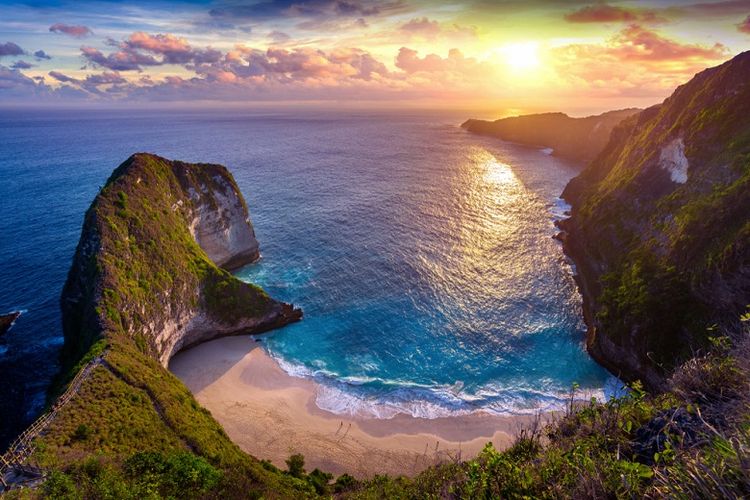Bali Temples: Discover the Spiritual Heart of the Island of Gods
As the morning mist rises over emerald rice terraces, the sound of chanting drifts through the air. You follow it to a stone gate guarded by statues wrapped in black-and-white sarongs. Welcome to Bali, the Island of Gods — home to over 20,000 temples that pulse with daily devotion and centuries-old tradition.
For global travelers, Bali temples are more than Instagram backdrops; they’re living monuments where faith, art, and nature unite.
1. The Magic Behind Bali’s Temples
Every Balinese temple (known locally as pura) represents a bridge between the seen and unseen worlds.
According to Bali Cultural Heritage Report 2023, over 87% of Balinese practice Hindu Dharma, blending Indian influence with ancient animism and local spirituality.
Temples are everywhere — from seaside cliffs to volcanic peaks — each dedicated to different deities and natural elements. Visiting them offers not just stunning views, but a deeper understanding of Balinese life.
💬 “Temples in Bali aren’t museums — they breathe. Every ceremony, every offering, every sound of the gamelan keeps them alive.”
— I Nyoman Sutarna, Balinese cultural historian
2. Understanding the Balinese Temple Culture
Tri Hita Karana – The Philosophy of Harmony
The foundation of Balinese belief, Tri Hita Karana, teaches harmony among:
-
Humans and God (Parahyangan)
-
Humans and Humans (Pawongan)
-
Humans and Nature (Palemahan)
Every temple design reflects this balance — open courtyards, mountain backdrops, and offerings made to maintain universal order.
Temple Etiquette & Dress Code
Respect is essential.
-
Wear a sarong and sash (often provided at entrances).
-
Avoid entering inner sanctuaries during ceremonies unless invited.
-
Women should refrain from visiting during menstruation (a local religious rule).
-
Keep your head lower than temple priests and holy objects.
3. Top 7 Most Iconic Bali Temples You Should Visit
Quick Overview Table
| Temple | Location | Highlight | Best Time to Visit |
|---|---|---|---|
| Tanah Lot | Tabanan | Temple on the sea rock | Sunset |
| Uluwatu Temple | Bukit Peninsula | Clifftop views & Kecak dance | Late afternoon |
| Besakih Temple | Mount Agung | Bali’s largest and holiest | Morning |
| Tirta Empul | Tampaksiring | Holy spring bathing ritual | Morning |
| Ulun Danu Beratan | Bedugul | Floating on Lake Beratan | Sunrise |
| Goa Gajah | Ubud | Ancient carvings & cave sanctum | Morning |
| Lempuyang Temple | East Bali | “Gate of Heaven” photo spot | Early morning |
1. Tanah Lot – The Temple in the Sea

Perhaps Bali’s most photographed site, Tanah Lot sits atop a rocky outcrop surrounded by crashing waves.
Built in the 16th century by the priest Dang Hyang Nirartha, it’s dedicated to the sea gods who protect the island.
At low tide, visitors can walk to its base; during sunset, the silhouette against the glowing sky is pure magic.
📸 Tip: Arrive by 4:30 p.m. to catch the golden hour and traditional dance performances near the entrance.
2. Uluwatu Temple – Dramatic Clifftop Views
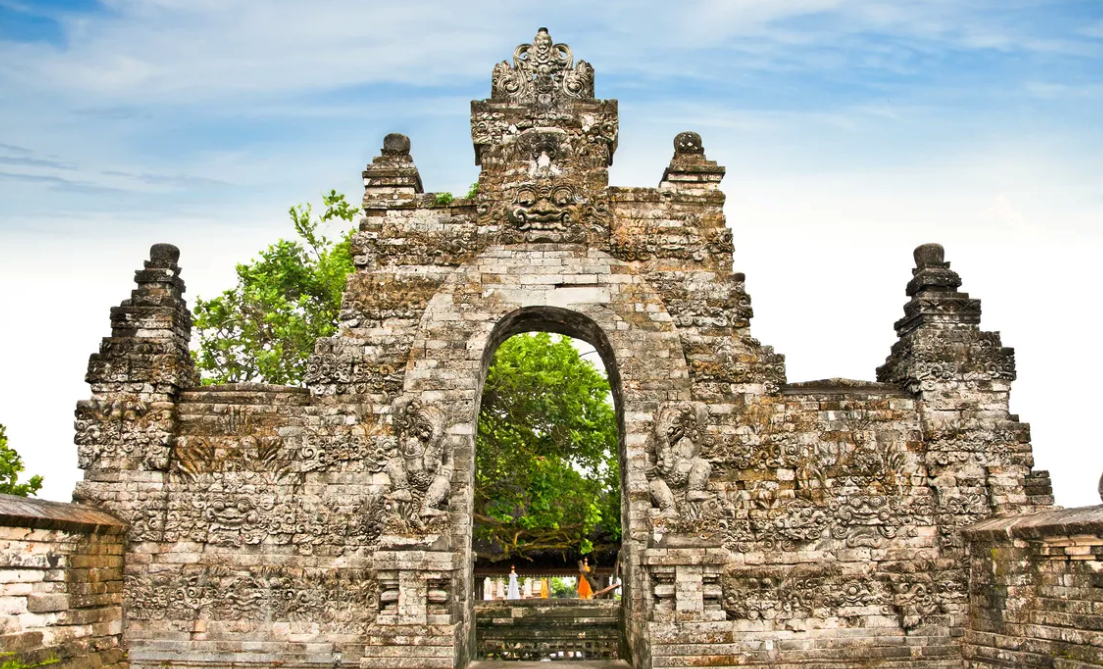
Perched 70 meters above the Indian Ocean, Uluwatu Temple (Pura Luhur Uluwatu) offers one of the most breathtaking coastal panoramas in Asia.
Stay for the Kecak fire dance, performed nightly at sunset — a mesmerizing retelling of the Ramayana epic.
Watch out for cheeky monkeys! Keep phones and sunglasses tucked away.
3. Besakih Temple – The Mother Temple of Bali
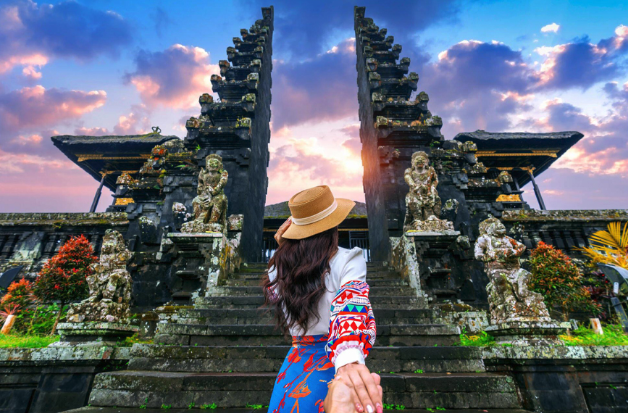
Located on the slopes of Mount Agung, Bali’s highest volcano, Pura Besakih is the island’s spiritual center.
It’s a vast complex of 23 temples, symbolizing harmony between humans and the gods.
Many Balinese make pilgrimages here during the Odalan festival, which marks each temple’s anniversary (based on the 210-day Balinese calendar).
4. Tirta Empul – The Holy Water Temple
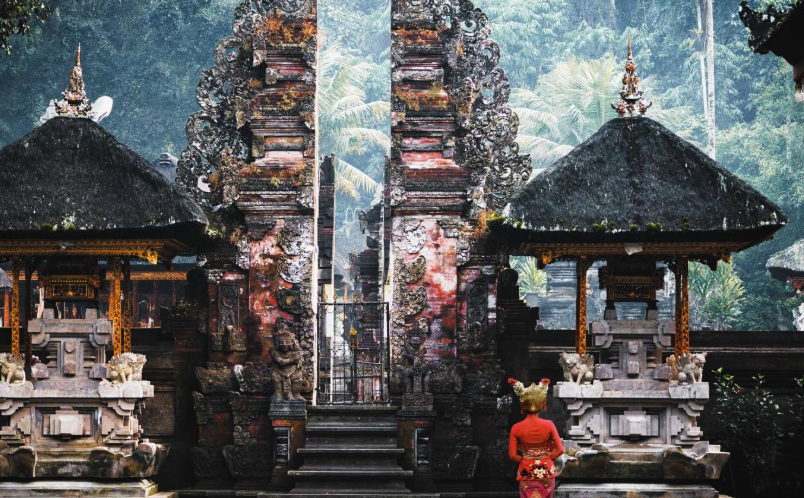
Built in 926 AD, this temple near Ubud is known for its sacred bathing pools fed by natural springs.
Locals and visitors alike join purification rituals believed to cleanse the body and spirit.
🕉️ Did you know? The water from Tirta Empul is used in ceremonies across the island.
5. Ulun Danu Beratan – The Floating Temple on the Lake
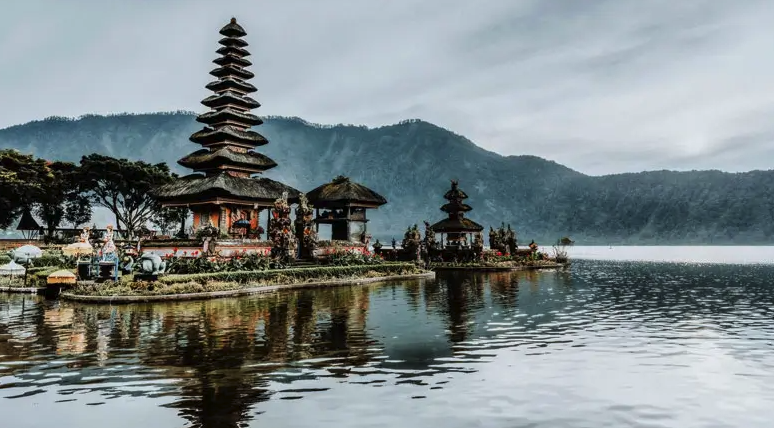
Situated 1,200 meters above sea level in Bedugul, this temple seems to float on Lake Beratan.
Dedicated to Dewi Danu, the goddess of water, it symbolizes the island’s dependence on agriculture and irrigation.
The misty mountain backdrop makes it one of the most picturesque spots in Bali.
6. Goa Gajah – The Ancient Elephant Cave

Dating back to the 9th century, Goa Gajah is both a temple and an archaeological site.
Its entrance is carved with mythological creatures, leading into meditation chambers. Nearby, tranquil gardens and fountains add to its serenity.
7. Lempuyang Temple – The Gate of Heaven
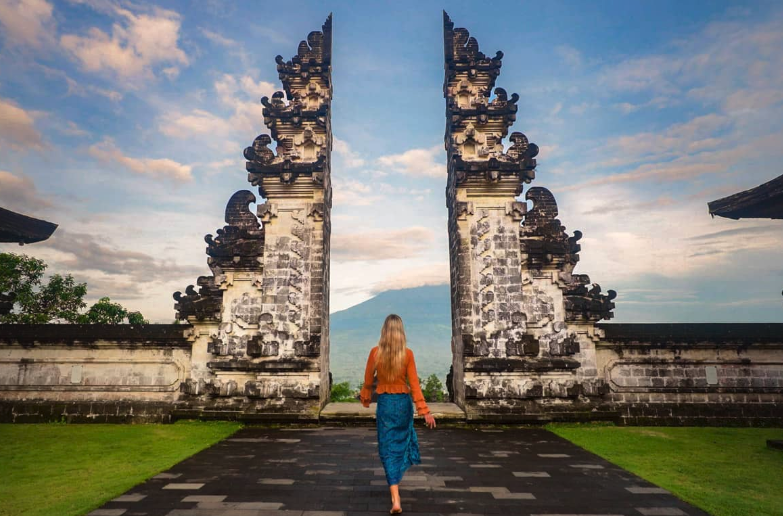
Famous for its “mirror photo illusion,” Lempuyang offers not only a photo opportunity but a deeply spiritual climb.
The complex consists of seven temples leading up Mount Lempuyang, each representing a step closer to enlightenment.
💡 Travel Note: Arrive before 7 a.m. to avoid crowds and haze that obscure Mount Agung.
4. Best Time and Tips to Visit Bali Temples
Festivals, Ceremonies, and Quiet Hours
-
Best season: Dry months (April–October).
-
Avoid: Midday heat (10 a.m.–2 p.m.).
-
Major temple festivals:
-
Galungan and Kuningan – victory of good over evil.
-
Odalan – temple anniversaries (each temple has its own date).
-
Nyepi – the Day of Silence (island-wide shutdown; temples closed).
-
Bring small cash for donations or sarong rentals, usually IDR 10,000–20,000 (≈USD 1–2).
5. Final Thoughts – Bali Temples Beyond the Postcard
Visiting Bali’s temples isn’t about ticking off landmarks — it’s about slowing down, listening, and feeling the island’s rhythm.
Each temple carries a story that connects heaven and earth, ancient wisdom and modern faith.
So next time you visit Bali, go beyond the beaches — follow the incense trails, hear the chanting, and experience the island’s soul.
👉 Explore more hidden gems and luxury stays in Bali
For detailed temple itineraries, visit Bali Untold’s Temple Guide.
FAQ – Bali Temples
1. How many temples are there in Bali?
There are an estimated 20,000+ temples, from small family shrines to grand complexes like Besakih.
2. What should I wear when visiting temples?
Always wear a sarong and sash; avoid sleeveless tops. Most temples provide rentals at the entrance.
3. Can tourists participate in ceremonies?
Yes, respectfully. You may observe or join certain rituals if invited by locals. Always ask first.
4. Is there an entrance fee for temples?
Most temples charge a small fee (IDR 30,000–100,000 ≈ USD 2–7), which helps with maintenance.
5. What are the best temples for sunset?
Tanah Lot and Uluwatu Temple are top picks for golden-hour views.


